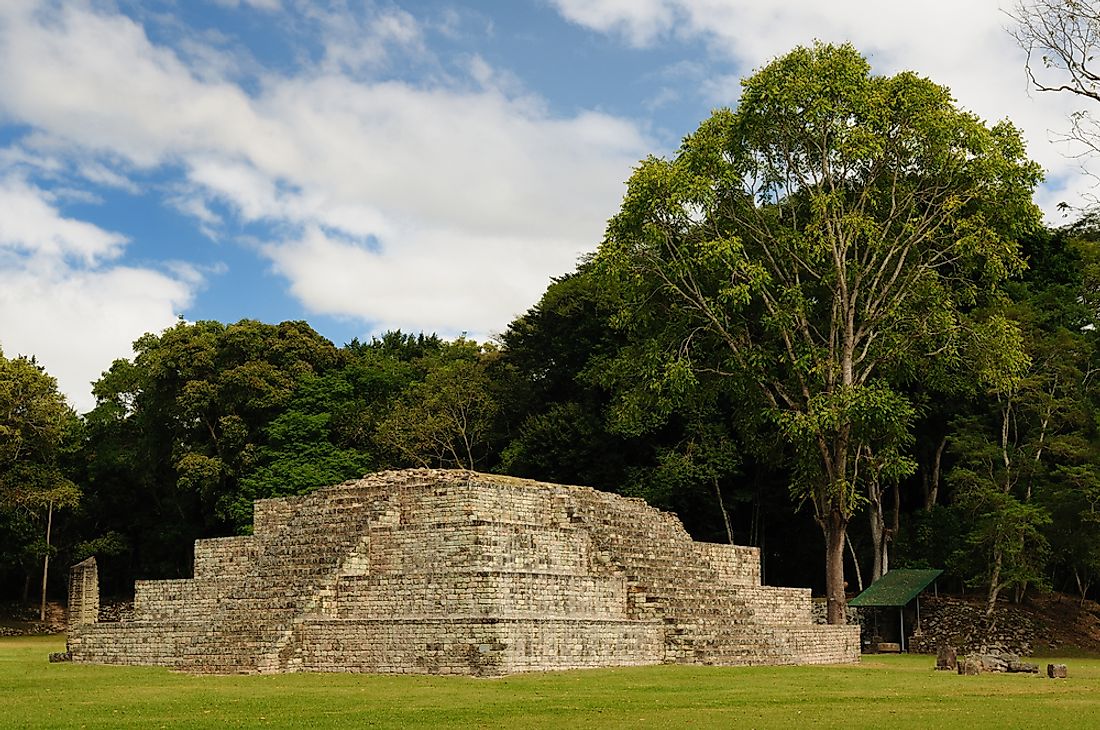The Copan Maya Archaeological Site, Honduras

The first known evidence of people inhabiting the Copan Valley area dates back to 1500 BC, with the first Maya-Cholan people immigrating to the region around 100 AD. The city's history before Maya leader K'inich Yax K'uk' Mo' (?-437) arrived to reform the city and start a new dynasty of rulers, is mostly unknown. What is known is that this dynasty of rulers changed the city of Copan to make in one of the greatest cities of the Classic Maya Period (300-900). The city became the political and cultural center of its territory, with major developments in mathematics, hieroglyphic writing, and astronomy taking place, along with impressive archaeological structures being built. At some point in the early 9th century, Copan collapsed when its political elite perished and by the early 10th century the city was basically abandoned. After this, the city was rediscovered in 1570 by Spanish explorer and researcher Diego García de Palacio (1540-1595). However, people back in Europe were skeptical of his tale until the 19th century when the city was found, and the excavation process on it began.
UNESCO World Heritage Site
The Copan Mayan Archaeological Site was designated as a United Nations Educational, Scientific and Cultural Organization (UNESCO) World Heritage Site in 1980. It was the first such site in Guatemala and is currently only one of two in the country. For tourists visiting the site, there is the Copan Sculpture Museum on the site, which opened in 1996. The museum was built to blend into the environment and also has a Mayan-inspired design to it. Tourists enter the museum through a tunnel and inside get to see the various artifacts that have been found from the site. The site is also important for researchers as it give them great insight into the history and culture of not only this city, but the greater Mayan civilization.
Attractions
The Copan Mayan Archaeological Site is archaeologically sound because the design, features and sizes of its various temples, terraces, plazas and more represent the architectural and sculptural characteristics that were standard for the period of the Classic Maya Civilization. The site, however, is also unique for its spectacular achievements for this period of Mayan culture with the amount, the size and elaborate design of the buildings and monuments in the city. For the region, the stelae, altars and the inscription on the Hieroglyphic Stairway are some of the most beautiful and historically important Mayan structures in the area. The inscription shows the most important rulers of the city. The Copan site also has a Ballcourt, which is one of the largest that is known to have been built during the Classic period.
Location
The Copan Maya Site sits in the Copan Valley in Honduras, right near the border with neighboring Guatemala. The area around the Copan site is mostly made up of rainforest and the nearby Copan River, although there are some elements of a town and agriculture near the edges of this forest. The whole site its self is about 9.5 square miles (24.6 square kilometers) in size with a major central plaza and an adjoining acropolis nearby. The site also has a number of overlapping pyramids and palaces set up with various stelae and altars around the site.
Threats
The Copan Mayan Archaeological Site is threatened by continued erosion at the site from weather and the Copan River, as well as from microflora. The outlying areas of the site are threatened by agricultural practices that take place near the area. The site is also threatened by earthquakes since it is in a seismic zone and has been previously damaged at least twice by earthquakes. The larger natural surroundings of forest around the site are also threatened by the expanse of the nearby growing town. Despite all of these factors the damage from potential threats they have most been diminished as the site is constantly monitored so that its integrity is able to be maintained. There have also been restoration projects have been done to help repair the site and also have it retain its original authenticity.







